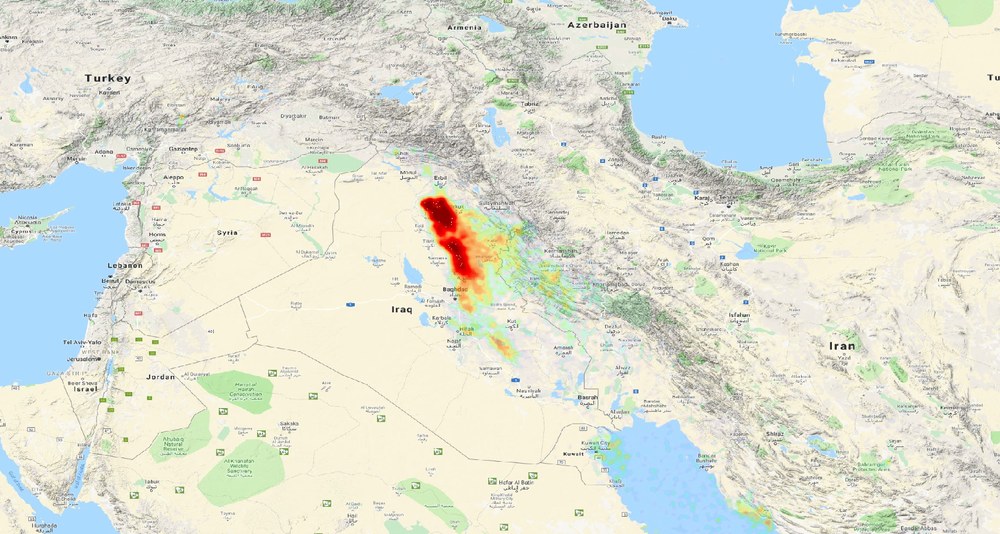Explosion of a sulfur plant in Iraq – Sentinel-5P detects strong SO2 emission
On 27 und 28 June the Sentinel-5P (S5P) satellite detected a very strong SO2 cloud in northern Iraq. The source for this strong emission was an explosion in the al-Mishraq sulphur plant located in Hamam al-Alil, south of Mosul. The plant caught fire in the afternoon of 26 June 2019. The TROPOMI spectrometer aboard S5P detected an emission of more than 14 tons of SO2 in the atmosphere.
Local media reported that a firefighter was killed and several locals suffered breathing problems due to the emission of gases. According to Al Iraqiya, the fire has now been brought under control. It is unclear what caused the fire. The sulphur plant was previously set on fire intentionally at the end of 2016, during which the toxic gases produced by the fire killed at least two civilians and caused breathing problems for more than a thousand people. The plant is owned by the Mishraq Sulphur State Company.
In the Middle East several oil refineries and power plants emit vast amounts of Sulphur Dioxide into the Earth’s atmosphere, affecting the local air quality. In recent years, the emission of SO2 in the area has overcome that of China and is, together with India, the main source for anthropogenic SO2 pollution. Also the Middle East's sour gas and sulphur network has been growing in recent years, now being the largest sulphur producing region.
S5p was launched on 13 October 2017 and is operational since March 2018. The SO2 retrieval algorithm and the operational processors were developed by BIRA and DLR, and they are integrated in the S5p ground segment running at the DLR Earth Observation Center (EOC) in Oberpfaffenhofen.
SO2 is a natural trace gas in Earth’s atmosphere. The largest source for SO2 in the atmosphere is the burning of fossil fuels by power plants and other industrial facilities. Furthermore volcanic degassing events and eruptions inject SO2 into the atmosphere, ranging from the lower troposphere (passive degassing), as well as high as into the stratosphere (explosive eruptions).
The timely retrieval of SO2 is extremely important for volcanic eruptions which are a major natural hazard, not only to the local environment and populations near large volcanoes but also to aviation. Therefore in July 2019 DLR and ESA have started a project (S5P+I: SO2 LH) to determine the layer height of SO2 clouds measured by S5p. This additional information is needed to determine the source for an increased SO2 signal and the subsequent transport of the SO2 cloud in the atmosphere.

